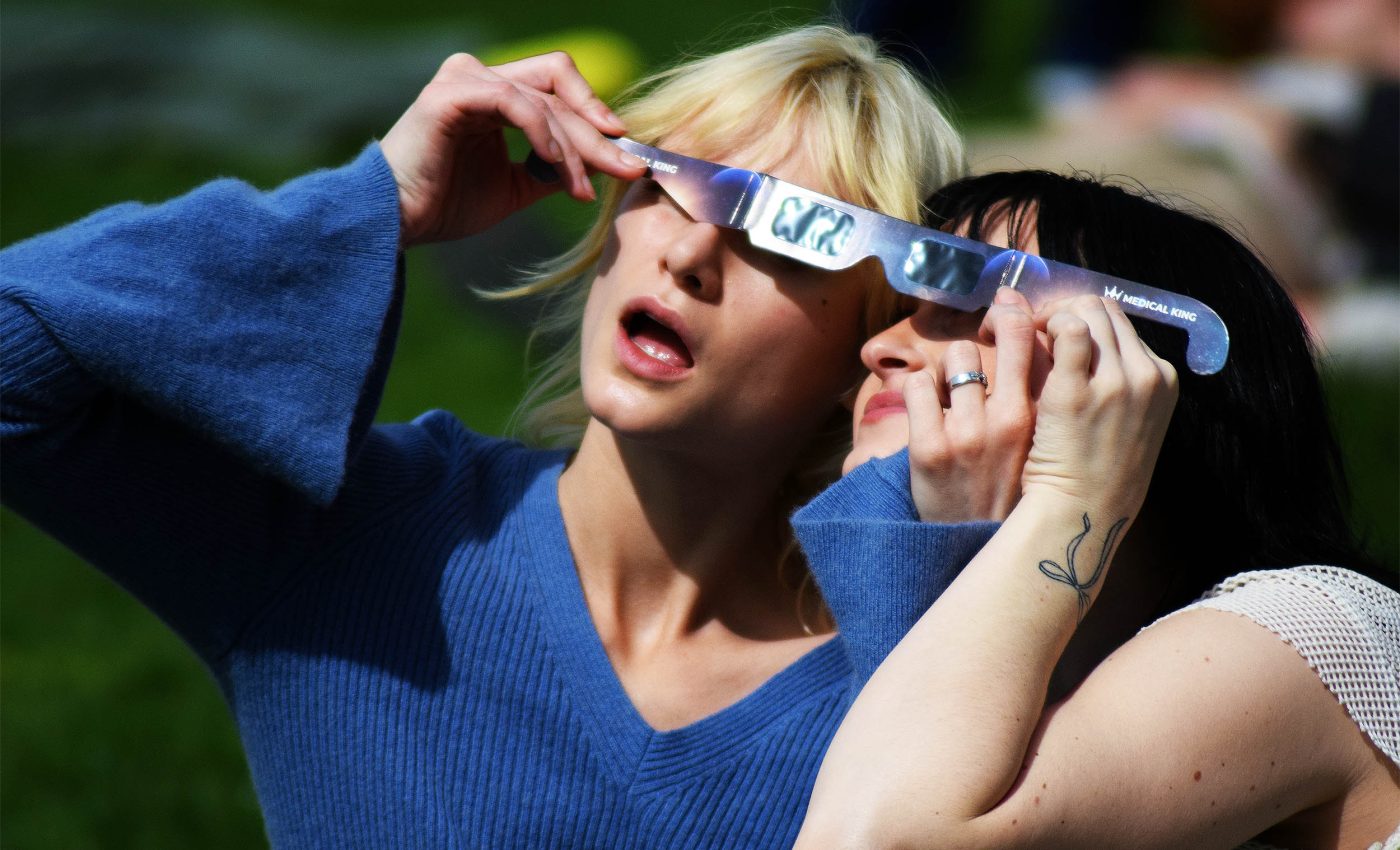
NOAA: Wear eclipse glasses to see aurora-causing sunspots
The sun’s surface may be in for a minor to moderate flare-up from new sunspots, according to the most recent weekend space weather solar forecast by the National Oceanic and Atmospheric Administration (NOAA).
They suggest that a few R1 and R2 solar flares may erupt from active sunspots, causing our celestial father to glow with unusual intensity.
While the weekend forecast doesn’t quite predict a Northern Lights display, remember that solar flares are a major cause of this phenomenon.
Given it takes a few days for solar material to become visible on Earth, we may be in for a surprise aurora showing sometime next week.
Solar flares and sunspots
An area of the Sun, identified as ‘Region 3796’, that has been quite active lately, appears to have slowed down. Nonetheless, the NOAA remains suspects to see more solar storms from sunspots as soon as this weekend.
This optimism stems from the fact that this region produced an R2 flare Wednesday morning, indicating its “flare potential.”
As of last Thursday, there were 12 distinct sunspot groups covering over 2 billion miles. That’s more than 11 times the land area of our home planet!
With Region 3796 currently facing Earth, these sunspots should be visible with the right equipment.
Spot the sunspots
NOAA suggests using solar eclipse glasses to view the spots while the sun is still in the sky. However, do not forget to inspect your glasses for any scratches, marks, or holes — these could potentially diminish the protective ability of your spectacles.
The sun rotates around 13 degrees every day, allowing us to observe how the sunspots evolve each day as they grow, potentially trigger solar flares, fade away, or rotate out of sight.
How solar eclipse glasses work
Solar eclipse glasses serve a vital purpose when viewing auroras, as they effectively filter out harmful ultraviolet (UV) and infrared (IR) radiation.
While auroras may not radiate as intensely as the sun, their brightness can still be striking, particularly during powerful displays.
By reducing brightness, these glasses allow observers to appreciate the vibrant colors and intricate patterns of the auroras without straining their eyes. Proper eye protection is essential for a clear and enjoyable viewing experience.
Moreover, by blocking excessive light, the glasses enhance the contrast between the auroras and the dark sky, resulting in a more comfortable and visually captivating experience.
Understanding solar cycles
The sun goes through a cycle approximately every 11 years, and we’re currently in ‘Solar Cycle 25’. This cycle has been the source of solar flares and geomagnetic storms, resulting in recent sightings of the Northern Lights.
NASA predicts that this cycle will continue into the next year.
Commencing in December 2019, Solar Cycle 25 is anticipated to reach its maximum — when solar flares and activity are expected to peak — between late 2024 and early 2026.
The projected peak comes with 115 sunspots, which are notorious for birthing geomagnetic storms.
Although this maximum phase hasn’t yet arrived, our sun’s activity has been livelier than scientists expected, leading to the possibility of more geomagnetic storms leading up to 2026.
However, predicting the exact timing of these storms can be tricky.
Effects of solar flares on Earth
Solar flares, resulting from increase in sunspots, can significantly impact both technology and daily life on Earth.
When solar flares erupt, they release immense bursts of energy and charged particles that can disrupt communication systems, navigation satellites, and even power grids.
These disturbances can lead to radio blackouts, GPS navigation inaccuracies, and in extreme cases, widespread electrical outages.
Scientists and engineers continually monitor solar activity to mitigate these effects, employing advanced models that help to predict solar storms and their potential consequences.
Awareness of solar activity is vital, especially for those in fields heavily reliant on technology.
High sunspot activity impact solar flares
To provide some context, around 299 sunspots were observed on August 8, as predicted by NOAA. This remarkable figure marks the highest sunspot count recorded since the beginning of Solar Cycle 25 and is also the most significant number of sunspots seen since at least July 2002.
Sunspots, which are temporary phenomena on the Sun’s photosphere, indicate areas of magnetic activity and can significantly influence solar radiation output.
The increase in sunspots and solar flares can have various effects on space weather, affecting satellite operations and even power grids on Earth.
The official count and analysis of these sunspots will be released by NOAA on September 1, providing further insights into solar activity.
As we marvel at the mysteries of the cosmos, we continue to be awestruck by the happenings of our neighboring celestial bodies.
Each day brings new discoveries and new questions. The best we can do is enjoy the ride, appreciate the discoveries, and never stop asking, “What’s next?”.
—–
Like what you read? Subscribe to our newsletter for engaging articles, exclusive content, and the latest updates.
Check us out on EarthSnap, a free app brought to you by Eric Ralls and Earth.com.
—–













